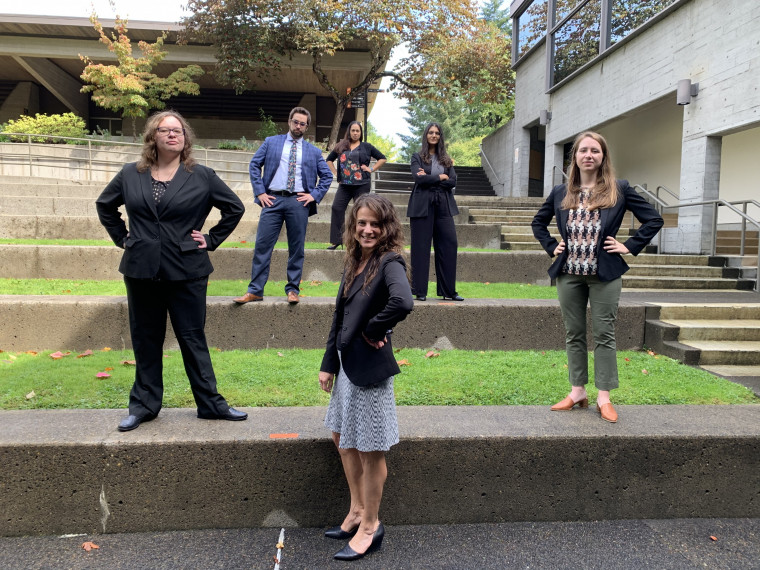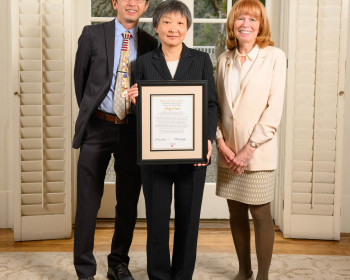The Ramos Project: Justice for Unjust Convictions
The Criminal Justice Reform Clinic works to eliminate the impact of Oregon’s non-unanimous jury rule by providing legal assistance to people with post-conviction relief cases based on Ramos v. Louisiana, the U.S. Supreme Court’s case striking down non-unanimous jury convictions in criminal cases.
Open gallery

On April 20, 2020, the U.S. Supreme Court issued a decision in Ramos v. Louisiana, finding that non-unanimous jury convictions in state criminal courts are unconstitutional. However, just a year later the U.S. Supreme Court issued a 6-3 ruling, known as Edwards v. Vannoy, denying retroactive relief for prior non-unanimous jury convictions on federal collateral review.
While Ramos helps eliminate future convictions with non-unanimous juries, Edwards prevents relief for those wrongly convicted prior to the Ramos decision under federal law. Professor Aliza Kaplan and Criminal Justice Reform Clinic (CJRC)’s attorneys and students have been involved in litigating cases, and creating litigation materials for defense attorneys around the state arguing for retroactive relief of the Ramos ruling. “Unfortunately, our AG has been fighting against retroactivity in the courts since day one and [it] looks like it’s not going to change. We are hoping the Oregon Supreme Court follows Oregon law and puts this horrible old racist law to rest by allowing everyone with a non-unanimous jury conviction an opportunity for a fair and just trial or that our legislature steps in to get this unfinished business done .” Kaplan said.
For more than a year, CJRC has been working to assist petitioners affected by Ramos. Calling their work the Ramos Project, the CJRC has received an overwhelming number of requests from prisoners–more than 500 individual appeals for assistance and the Clinic also works to assist other attorneys in their Ramos cases. “Claims are being brought through post-conviction relief, which is a form of collateral challenge to the conviction based on a constitutional violation,” Kaplan shared.
“This issue has brought a lot of amazing opportunities for CJRC students over the years. Over the last year, students have helped to draft three amicus briefs, have been working with 50 community organizations, created materials for lawyers in the state to access, and corresponded with incarcerated individuals about their cases and the US Supreme Court rulings,” Kaplan stated. The latter are resource drafts for all lawyers within the state to use for post-conviction relief Ramos cases, and include complaints, briefs, timelines, and more. “We definitely want everyone on the same page arguing the issues since all cases require the same arguments with regard to Ramos issues,” Kaplan said.
Due to the volume of requests received, volunteer attorneys from Tonkon Torp, Davis Wright Tremaine, Perkins Coie, and Schwabe, Williams & Wyatt are assisting the Ramos Project to litigate and represent individuals in their post-conviction cases.
Bijal Patel, ’22, one of the students who actively worked to help prisoners file post-conviction relief, gained valuable experience during her time at the CJRC. The clinic has prepared her to be more thoughtful about the constitutional rights of all individuals and ensuring that knowledge is broadly communicated. As a result, Patel realized a majority of the people affected by the Ramos decision are unaware they are eligible for a Ramos claim.
However, with the recent Edwards decision, most of the work to redress unjust verdicts lies in the hands of the Oregon Attorney General, our appellate courts and maybe the legislature. “All we can hope is that these authorities will work to right the wrongs that resulted through the occurrence of these non-unanimous juries,” Patel stated.
In conjunction with the work representing clients, the Ramos Project is compiling research regarding the disproportionate effect non-unanimous juries have had on people of color. After reviewing public records to determine the racial designation of defendants in 427 direct appeal cases, the review offered a snapshot of the racial impact of Oregon’s non-unanimous jury system in recent years: although White individuals comprise approximately 75.1% of Oregon’s population, their rate of non-unanimous convictions were 63%; conversely, although individuals of color—including members of the Black, Latinx, and Native American communities—comprise approximately 17.4% of Oregon’s population, their rate of non-unanimous convictions were 32.56%.
The Ramos Project has also reviewed public records to determine the racial makeup of people thus far who are challenging their old non-unanimous jury verdict convictions by filing for post-conviction relief. 16.81% (38) involve Black petitioners, despite making up just 2.2% of Oregon’s population. 14.16% (32) involve Latinx petitioners, despite making up just 13.4% of Oregon’s population. 2.65% (6) involve Native American petitioners, despite making up just 1.8% of Oregon’s population.
Using this data to demonstrate both a systemic, disproportionate application of non-unanimous verdicts and the impact of that dynamic, is one of the CJRC’s goals. Not only will this support the legal claims made by those with unconstitutional non-unanimous convictions, but it could lead to rehabilitating other unjust areas of Oregon’s criminal justice system.
Read an OSB Bulletin article covering the work of the CJRC and the Ramos Project here.
Law Communications is located in room 304 of Legal Research Center (LRC) on the law Campus.
MSC: 51
email jasbury@lclark.edu
voice 503-768-6605
Cell: 626-676-7923
Assistant Dean,
Communications and External Relations, Law School
Judy Asbury
Law Communications
Lewis & Clark Law School
10101 S. Terwilliger Boulevard MSC 51
Portland OR 97219

